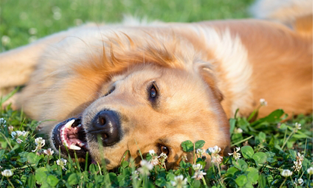A short guide to Doggie Day Care 
15th January 2015
Dogs need a bit of a socialisation to feel good – in that they are not so far removed from our own social needs as humans. I don't know about your pets, but both my dachshund and golden retriever were very energetic and loved interacting with other dogs. That's why I occasionally took them to a doggie day care whilst running some of the errands which composed my daily routine.
Deciding on doggie day care
Before I went out and chose a dog day care for my two buddies, I researched around a bit. After all, those two were my friends and I wanted the best experience for them. If you are leaning towards using a doggie day care, please be sure to consider a few of the following tips.
Two things to consider when it comes to doggie day care
The first thing you want to consider is if your dog will actually feel happy and secure in such an environment. I think it's the same as how some people absolutely love going to parties and loud clubs...whilst others do their best to avoid them. Not every dog enjoys being around other dogs and “partying” during play time.
So what is your dog's character? When you go out for a walk, does he or she socialize with others well? Is he or she quickly exhausted when it's playing time?
There are such a lot of things to understand before sending your pet to day care. Dogs low on energy levels, dogs who feel more comfortable at home and dogs who are considerably more laid back, might not be as comfortable going there. No-one is more in tune with understanding their pet’s personality than you. You can spare your pets from such a stressful situation, should you believe that doggy day care is not for them.
A second important thing to note is the number of dogs present in the day care facility compared to the staff numbers. No matter how experienced a trainer is, groups greater than 20 dogs per person are generally not where I'd leave my buddy. The optimal number for me would be a group consisting of 12 to 17 dogs, depending on their “wildness” level (or better put – their energy levels). Of course it would be better to have even less dogs per staff member, but very small dog groups are not easily found.
Visit the day care facility
I think the best option is to go and check the day care facility for yourself. Go ahead and visit it as you will see the environment, material base, available services and the way the staff communicates with, and interacts with, their guests. You are free to ask any questions that concern you and receive their corresponding answers. In my case I asked whether dogs are separated by size during playtime. Having a retriever and a dachshund is pretty much a case study in what could go wrong when different sized dogs play together, so naturally I wanted more clarification on this.
A visit will also help you with directly judging the staff proficiency. There is nothing worse than leaving your beloved dogs in inexperienced hands. It's your right to ask for credentials, certificates and other documents or acknowledgments verifying that you are in contact with registered professionals. Reputable professionals should be more than happy to oblige with these requests. Dog behaviour and group dynamics are neither simple nor easy to sort through so you need staff members to be good at what they do.
The day care aftermath and being the alpha dog
Each time Rake (my dachshund) and Liam (the goldie) came back home, they were always tired from the experience, but not in the bad way. If you look closely into dog behaviour you will see that there are many variations of how they experience things. A dog's tiredness comes in many shapes. My dogs were happily tired. It was obvious that they enjoyed the experience and that they would enjoy it if I were to leave them at day care again (and so I did).
A friend's pug – by the way, she's the only dog I've known to have two names, was tired due to different reasons – she was clearly stressed. It obviously hadn't been a great day for her so my friend decided to stop with doggie day care.
The bottom line is that you need to carefully check how your dog reacts. You don't want to force this upon him (or her) because you will totally stress the poor thing out. Dogs are very expressive about how they feel so reading the signs shouldn’t be too complicated – you just need to act upon them appropriately.
Even if your dog enjoys day care, my most important tip is to not to overdo it. There are two reasons to keep from visiting the day care too often:
First, let's be honest: there's no dog that can live up to the energy needed for five consecutive days of playing around in the day care. Even four days can be a strain. It's a fun experience for sure, but it is also physically draining for them.
Second – after all, you are your dog's best friend (and owner). If you rely on day care and other people to look after your dog too much, you lose credibility. I was the “alpha dog” for both Rake and Liam because I was around the most. Yes, I left them at day care, but I didn't overdo it. They knew they would occasionally play with other dogs and people, but it was me who took the greatest care for them – and me who they inevitably listened and looked up to.
Article written by our resident Pet Blogger, Alexander Dimitrov
Related articles:
Cat boarding and the delicate nature of cats
The whys and how’s of pet sitting
Dog boarding: Social & fun...if you choose the right facility

10 important questions to ask before boarding your pet
Going away on holiday can be an exciting time for us pet owners, yet how can you be sure that your companions stay will be as happy and relaxing as your own, whilst you are away? Leaving your pet with knowledgeable and experienced pet boarding operators can be achieved by knowing the right questions to ask.
Read more

 *Fully tax deductible, 30 day money back guarantee
*Fully tax deductible, 30 day money back guarantee



